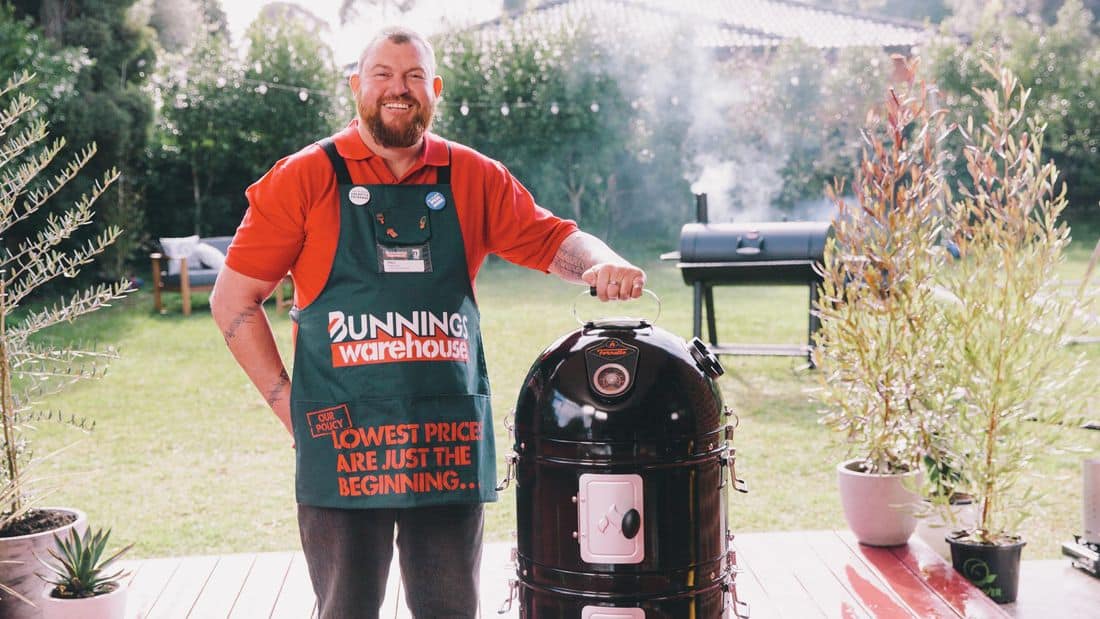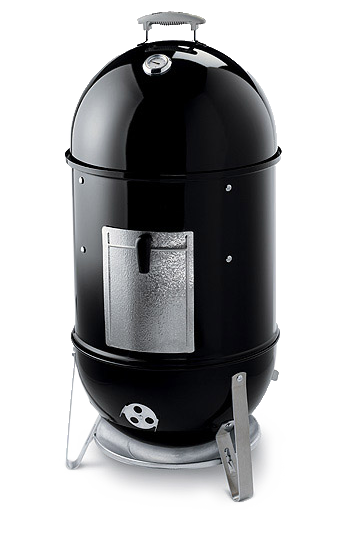How to use a bullet smoker? To use a bullet smoker, fill the charcoal chamber, add wood chips for flavor, light the charcoal, adjust the vents for airflow, place food on the cooking grates, and monitor temperature for desired smoking results.
From Novice to Pitmaster: Learn How to Use a Bullet Smoker Like a Pro
Bullet smokers, also known as drum smokers or barrel smokers, are a popular choice among barbecue enthusiasts for their ability to produce delicious smoked meat with minimal effort. These smokers are named for their cylindrical shape, resembling a bullet or a drum. They consist of three main parts: the firebox, the cooking chamber, and the lid.
The firebox is located at the bottom of the smoker and is where you place your charcoal or wood for smoking. The heat and smoke rise up into the cooking chamber, which is where your meat is placed on grates or hooks. The lid is then placed on top to trap the heat and smoke inside, creating a controlled environment for smoking.
One of the advantages of using a bullet smoker is its ability to maintain a consistent temperature throughout the cooking process. The design of the smoker allows for even heat distribution, resulting in evenly cooked meat. Additionally, bullet smokers are known for their fuel efficiency, as they require less charcoal or wood compared to other types of smokers.
Choosing the Right Bullet Smoker for Your Needs and Budget
When choosing a bullet smoker, there are several factors to consider. First and foremost, you’ll want to determine your budget. Bullet smokers come in a range of prices, so it’s important to find one that fits within your budget without compromising on quality.
Next, consider the size of the smoker. If you plan on smoking large cuts of meat or cooking for a large group of people, you’ll want a larger smoker with ample cooking space. On the other hand, if you only plan on smoking for yourself or a small group, a smaller smoker may be more suitable.
There are also different types of bullet smokers to choose from. Some models have additional features such as built-in thermometers or adjustable vents for temperature control. Consider what features are important to you and choose a smoker that meets your needs.
If you’re on a tight budget, there are budget-friendly options available. These smokers may not have all the bells and whistles of more expensive models, but they can still produce great results. Look for smokers made from durable materials and with good reviews from other users.
Essential Tools and Accessories for Bullet Smoking
To get started with bullet smoking, there are a few essential tools you’ll need. First and foremost, you’ll need a good quality meat thermometer to ensure your meat is cooked to the proper temperature. This is crucial for food safety and to achieve the desired level of doneness.
You’ll also need a pair of long-handled tongs or a spatula for handling the meat while it’s on the smoker. These tools will allow you to flip and move the meat without burning yourself or losing precious heat from the smoker.
A chimney starter is another essential tool for bullet smoking. This device allows you to easily light your charcoal or wood without the need for lighter fluid, which can impart an unpleasant taste to your food.
In addition to these basic tools, there are several accessories that can enhance your smoking experience. A water pan is a popular accessory for bullet smokers, as it helps to maintain moisture in the cooking chamber, resulting in juicier meat. A drip pan is also useful for catching any drippings from the meat, preventing flare-ups and making cleanup easier.
Other accessories to consider include grill mats, which can prevent small pieces of food from falling through the grates, and smoking racks or hooks for hanging larger cuts of meat.
Preparing Your Meat for Smoking: Tips and Techniques
Before you start smoking your meat, it’s important to choose the right cut and quality of meat. For beef, look for cuts such as brisket, ribs, or tri-tip. For pork, popular choices include pork shoulder or ribs. For poultry, whole chickens or turkey breasts work well. For fish, options like salmon or trout are great choices.
Once you have your meat, it’s important to trim any excess fat or silver skin. This will help the smoke penetrate the meat more evenly and prevent any unpleasant flavors from the fat. Seasoning your meat is also crucial for adding flavor. You can use a dry rub or a marinade, depending on your preference.
After seasoning, it’s important to let your meat rest before smoking. This allows the flavors to penetrate the meat and helps to ensure even cooking. Letting your meat rest for at least 30 minutes to an hour is recommended.
Smoking Woods and Charcoal: What to Use and How to Set Up Your Fire
Choosing the right smoking woods is essential for achieving the desired flavor in your smoked meat. Different types of wood impart different flavors, so it’s important to choose one that complements the type of meat you’re smoking.
For beef, woods such as hickory or mesquite are popular choices. These woods provide a strong, smoky flavor that pairs well with the rich flavor of beef. For pork, fruit woods like apple or cherry are often used, as they provide a slightly sweet and mild flavor that complements the natural sweetness of pork.
When it comes to charcoal, there are several options available. Lump charcoal is made from natural wood and burns hotter and faster than briquettes. Briquettes, on the other hand, are made from compressed sawdust and other additives. They burn longer and more consistently than lump charcoal.
To set up your fire, start by filling the firebox with charcoal or wood chunks. Light the charcoal using a chimney starter or other method, and once it’s fully lit and covered in ash, spread it out evenly in the firebox. Place a few chunks of smoking wood on top of the charcoal for added flavor.
Controlling Temperature and Smoke: The Key to Perfect Smoked Meat
Temperature control is crucial for achieving perfectly smoked meat. Most bullet smokers have vents that can be adjusted to control the airflow and therefore the temperature inside the smoker. Opening the vents allows more oxygen in, which increases the heat, while closing them restricts the airflow and lowers the temperature.
It’s important to monitor the temperature throughout the smoking process using a meat thermometer. The ideal smoking temperature will vary depending on the type of meat you’re smoking, but a general range is between 225°F and 275°F.
Managing smoke is also important for achieving optimal flavor. Too much smoke can result in a bitter taste, while too little smoke may not impart enough flavor. It’s important to find a balance that works for you and your personal preferences.
The Art of Brining and Marinating: Enhancing Flavor and Moisture
Brining and marinating are two techniques that can enhance the flavor and moisture of your smoked meat. Brining involves soaking the meat in a saltwater solution, while marinating involves soaking the meat in a flavorful liquid.
Brining helps to tenderize the meat and infuse it with flavor. It also helps to retain moisture during the smoking process, resulting in juicier meat. To brine your meat, simply dissolve salt and any other desired seasonings in water, then submerge the meat in the brine for several hours or overnight.
Marinating is another great way to add flavor to your smoked meat. You can use a variety of liquids for marinating, such as citrus juice, vinegar, or beer, along with herbs, spices, and other seasonings. Simply place your meat in a container or resealable bag with the marinade and let it sit in the refrigerator for several hours or overnight.
Injecting and Rubbing: Adding Flavor and Tenderness to Your Meat
Injecting and rubbing are two additional techniques that can add flavor and tenderness to your smoked meat. Injecting involves using a marinade or other flavorful liquid and injecting it directly into the meat using a meat injector. This helps to infuse the meat with flavor from the inside out.
Rubbing, on the other hand, involves coating the meat with a dry rub made from a combination of herbs, spices, and other seasonings. The rub forms a flavorful crust on the outside of the meat and helps to enhance the natural flavors.
To inject your meat, simply prepare your marinade or liquid of choice and fill a meat injector with it. Insert the needle into the meat and slowly inject the liquid, moving the needle around to distribute it evenly. Be sure to inject in multiple spots to ensure even flavor distribution.
To apply a dry rub, simply coat the meat with the rub mixture, making sure to cover all sides. Use your hands to massage the rub into the meat, ensuring it adheres well. Let the meat sit for at least 30 minutes to allow the flavors to penetrate before smoking.
Smoking Techniques for Different Types of Meat: Beef, Pork, Poultry, and Fish
Each type of meat requires slightly different smoking techniques to achieve optimal results. For beef, low and slow is the key. Beef cuts such as brisket or ribs benefit from long cooking times at low temperatures to break down tough connective tissue and develop rich flavors. Aim for a smoking temperature of around 225°F and cook until the internal temperature reaches your desired level of doneness.
Pork is another popular choice for smoking, with cuts like pork shoulder or ribs being particularly well-suited for this cooking method. Pork benefits from slightly higher temperatures than beef, around 250°F to 275°F. Cook until the internal temperature reaches 195°F for pulled pork or 165°F for ribs.
Poultry, such as chicken or turkey, can be smoked at slightly higher temperatures, around 275°F to 300°F. It’s important to cook poultry to a safe internal temperature of 165°F to ensure it’s fully cooked. Consider brining or marinating poultry before smoking to add flavor and moisture.
Fish requires a shorter cooking time and lower temperatures compared to other meats. Aim for a smoking temperature of around 200°F and cook until the fish flakes easily with a fork. Use delicate smoking woods such as fruit woods to complement the delicate flavor of the fish.
Troubleshooting Common Problems in Bullet Smoking: Overcooking, Undercooking, and Uneven Heat
While bullet smoking is generally a straightforward process, there are some common problems that can arise. Overcooking is a common issue, especially for beginners. To avoid overcooking, it’s important to monitor the internal temperature of your meat using a meat thermometer. Remove the meat from the smoker once it reaches the desired temperature and let it rest before serving.
Undercooking can also be an issue, particularly if you’re not monitoring the temperature closely. To avoid undercooking, make sure you’re maintaining a consistent temperature in your smoker and check the internal temperature of the meat regularly.
Uneven heat distribution is another common problem in bullet smoking. This can result in some areas of the meat being overcooked while others are undercooked. To address this issue, make sure you’re properly setting up your fire and using a good quality thermometer to monitor the temperature throughout the cooking process. Consider rotating or rearranging the meat during cooking to ensure even heat distribution.
Tips for Cleaning and Maintaining Your Bullet Smoker: Keeping It in Top Condition for Years to Come
Proper cleaning and maintenance are essential for keeping your bullet smoker in top condition and ensuring it lasts for years to come. After each use, remove any leftover ash or charcoal from the firebox and clean the grates using a grill brush. If there is any stubborn residue, you can use a mild dish soap and warm water to scrub it off.
It’s also important to periodically clean the inside of the smoker to remove any built-up grease or residue. You can use a mixture of vinegar and water or a specialized grill cleaner for this task. Be sure to rinse thoroughly and allow the smoker to dry completely before using it again.
Regular maintenance is also important for keeping your smoker in good working order. Check the vents and seals regularly to ensure they’re functioning properly. Replace any worn or damaged parts as needed. It’s also a good idea to store your smoker in a dry, covered area when not in use to protect it from the elements.
Bullet smoking is a fantastic way to add flavor and tenderness to your meat. With the right tools, techniques, and recipes, you can create delicious smoked meat that will impress your friends and family. By following these tips and tricks, you can become a master of bullet smoking and enjoy delicious smoked meat for years to come. So fire up your bullet smoker, experiment with different flavors and techniques, and get ready to enjoy mouthwatering smoked meat like never before!
Originally posted 2024-02-07 01:52:04.




